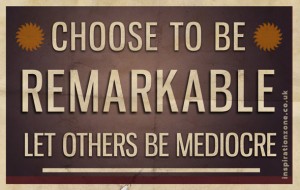 After my post on Relationship Killers, I received a great comment from Zach Rosenberg, who brings up another relationship killer—telling the customer they’re full of beans. Here’s what he had to say:
After my post on Relationship Killers, I received a great comment from Zach Rosenberg, who brings up another relationship killer—telling the customer they’re full of beans. Here’s what he had to say:
One of the relationship killers I’ve been seeing a lot is brands engaging incorrectly – namely, publicly telling a consumer that they’re wrong, or have somehow used their product wrong. If you’re addressing a customer in public – GREAT! But if you’re addressing them in public and telling them that they’re too dumb for your product somehow…then you’re letting them and everyone else within earshot know that you think your customers are idiots.
For example, loosely-related to another father-blogger’s recent experience – a customer frustratingly tweets something like “@Company’s online stock check sucks” The worst thing a brand can do is reply with something like “well it’s not really representative of the store’s stock. Did you call???”
This sort of brand interaction is toxic. An employee is so rah-rah about how great their retail establishment is that they’ve forgotten that customer experience is the reason why the technology exists…
Zach’s absolutely right—and this reaction isn’t limited to online relationships. We’ve all seen examples of terrible face-to-face customer service interaction, or have been victims of it. The trouble with having the same type of interaction with people online is that the audience “within earshot” is much bigger, and so is the potential fallout for your brand. But don’t think “in-store” interactions aren’t being shared online as well. Better train all employees who are consumer facing and make sure they understand how quickly how they behave can affect your brand.
In my opinion, here are three ways brands can avoid this issue:
- Carefully screen your online customer facing representatives: If you’re going to outsource your social customer service or assign it to someone in-house, make sure the assignee has the right personality for the job. They should be customer-friendly, naturally helpful and sympathetic. This is generally NOT the job for your IT or development staff or a part-time intern. Just because they set up your profile, doesn’t mean they’re good at dealing with people. AND… train them properly and make sure they understand the ramifications of what they do.
- Don’t add customer service to an already overloaded individual: Stress is one of the biggest contributors to reactionary responses. Don’t be tempted to add customer service to someone’s plate when they already have a full-time job. It’s hard to keep your game face on when you’re pulled in too many directions, and this type of interaction requires focus and calm.
- Have a written plan in place for dealing with possible negative posts: It helps to sit down and brainstorm all the possible complaints or objections people could have to your product or service before you run into them. Rather than being surprised when something comes up, and not knowing what to say or having a knee-jerk reaction, plan out your responses for given situations. Be honest with yourself here, and put yourself in your customer’s shoes. Get with your legal department that is necessary in your industry for this exercise, but trust me—having a written guide for how to formulate responses by type will help tremendously. But for heaven’s sake, don’t send a “form letter type response” in a social setting. Personalize every response!
For instance, Zach went on to give me an example of a different way to respond to the negative post mentioned in his comment:
“It’s more simple (and makes them look better) to say something like, ‘We apologize; it’s not a perfect system, but we’re working on it! What item were you looking for?’ Even if that employee on Twitter can’t actually solve the problem, they’ve not made the customer feel like they’re the problem.”
Do you see how following these steps would have helped in this situation? Getting the right people in customer-facing situations and arming them with a plan for possible complaint types can help you turn potentially bad situations around… online and off.
Look at a negative response as an opportunity to assist someone, to build your brand reputation… and do your best to kindly resolve the situation and show consumer you care. Remember, you’re on “Candid Camera,” when it comes to social activity. When others see that you responded positively and quickly to resolve an issue, they are more attracted to your brand. Everyone loves great customer service—so be as transparent as possible when you interact with negative comments online. A relationship restored will bring you many happy returns!
Originally posted at TedRubin.com

 It’s no secret that I’m a fan of Dunn Brother’s coffee.
It’s no secret that I’m a fan of Dunn Brother’s coffee. 


 “Motivated employees make a huge difference in service” says
“Motivated employees make a huge difference in service” says